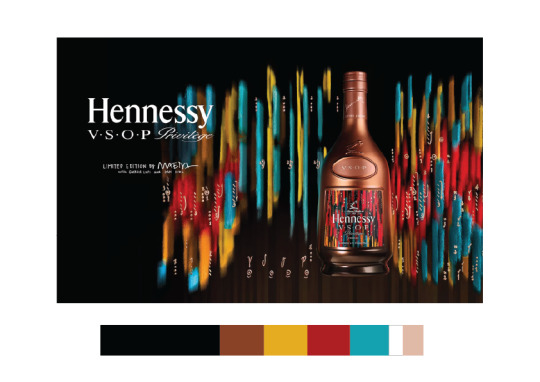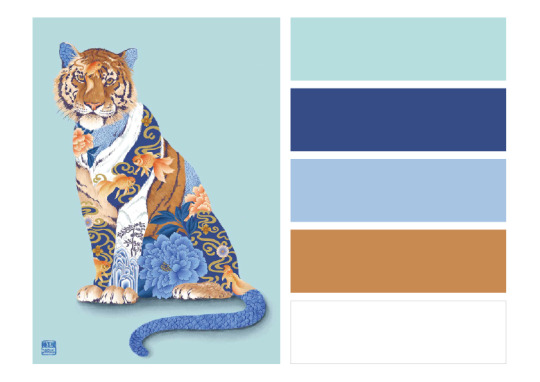She/Her*!Graphic design!* Assemble project “Tree and apple”Movement project “Birds”
Don't wanna be here? Send us removal request.
Text
Explanation of the Anthropocene Poster Concept:

The poster’s concept emerged from the need to visualize the tension between nature’s fragility and humanity’s destructive dominance. The term "Anthropocene" served as the foundation — it defines an era where humans have become the primary force altering Earth’s systems. To translate this into imagery, I focused on a metaphor of erosion : the bird’s skull represents species extinction, while the "feathers" transforming into plastic waste (bottles, caps, disposable items) illustrate how the natural world is being displaced by artificial, toxic substitutes.
I aimed to create an emotional contrast : birds typically symbolize freedom and vitality, but here, their form is corrupted into a symbol of death and human apathy. The plastic "growing" from the skull emphasizes how waste consumes nature — not just as pollution, but as a systemic collapse where short-term comforts erase long-term survival.
The color palette — stark blacks, grays, and cold tones — amplifies a sense of dystopia, while bright plastic fragments (e.g., colorful caps) mirror the artificiality of consumer culture. The word "ANTHROPOCENE" is rendered in harsh, industrial typography, contrasting with the skull’s organic curves.
Ultimately, the poster doesn’t just depict ecological crisis — it implicates the viewer, asking : «What legacy will our consumption leave?»
Here I have attached a PDF with my full explanation of my work :
0 notes
Text
Adobe After Effects
Poster Animation :

The bird's movement shows it's trying to get out of the dirt left by humans.
The image of a bird trapped in oily sludge and tangled plastic, its feathers matted and wings straining against the filth, is a haunting metaphor for humanity’s impact on nature. Each frantic movement speaks to its desperation—not just to escape the muck, but to survive in a world increasingly polluted by human carelessness. Oil clings to its body, destroying the waterproofing and insulation its feathers need to regulate temperature or fly. Plastics ensnare its limbs, turning habitats into death traps. Yet, the bird persists, driven by an instinct to survive that mirrors nature’s own resilience.
This struggle is not isolated. Millions of animals face similar fates: seabirds choking on plastic debris, marine creatures suffocating in oil spills, ecosystems buckling under waste. The bird’s ordeal is a microcosm of a planet in crisis, urging us to confront the consequences of our actions.
Why should this compel us to act?
- Empathy through connection : The bird’s suffering reflects the silent agony of countless species. Its determination mirrors Earth’s tenacity to endure, even as we push it to the brink.
- Responsibility : Every piece of litter, every unregulated industrial byproduct, contributes to this cycle of harm. Our convenience shouldn’t cost lives.
- Hope in action : The bird’s refusal to surrender is a call to channel our own resilience. Simple steps—refusing single-use plastics, supporting waste-reduction policies, volunteering for cleanups—can dismantle the horrors we’ve created.
Imagine a world where beaches are nesting grounds, not trash heaps; where rivers carry life, not toxins. The bird’s fight is a plea for that future. Let its struggle ignite not guilt, but resolve. Nature’s resilience is profound, but it cannot outlast our apathy. We must rise, not as destroyers, but as guardians—one conscious choice at a time.
0 notes
Text
Finally the final result.
This image :

This image has a strong symbolic message. The word “ANTHROPOCENE” is a term often used to refer to the geological epoch in which human activity has had a dominant impact on the Earth’s climate and ecosystem.
The image shows a bird’s skull, from which feathers seem to “fall” and turn into plastic waste — bottles, caps, disposable tableware, etc. It clearly and emotionally shows how human impact, in particular plastic pollution, leads to the destruction of nature and the extinction of species.
This is a powerful visual metaphor that criticizes the modern era, in which consumerism and neglect of the environment reign.
Let's analyze this image in detail in several dimensions: ecological, symbolic, aesthetic and social.
1. Ecological context :
The Anthropocene is an unofficial but widely used name for the latest geological era, in which man has become the main driving force of change on the planet. In particular:
• Plastic pollution has become a global problem. Plastic enters the oceans, where it is swallowed by birds, fish, mammals, often dying of hunger with stomachs full of indigestible waste.
• Birds, as depicted here, become symbols of victims of human activity. There are known cases of albatrosses and seabirds dying due to the consumption of plastic.
2. Symbolic context :
• The bird's skull is a symbol of death, extinction, the impossibility of return. This image directly indicates: nature suffers and dies because of our actions.
• Feathers turning into garbage are an apt metaphor for the transformation of nature into an artificial, dead environment. This shows how human intervention deforms natural processes.
• Plastic objects are a representation of excessive consumption. Most of them are disposable items that symbolize the “use and throw away” culture.
3. Aesthetic context :
• The contrast between organic forms (feathers, bird’s head) and rough, inharmonious plastic objects creates visual tension. This emphasizes the conflict between nature and the man-made environment.
• The use of dark tones (especially in feathers) hints at the tragedy and drama of the situation.
4. Social and ethical dimension :
• This image can be interpreted as a call to awareness of responsibility. Man is the creator of the Anthropocene, but he can and must also change the course of events.
• The artist seems to be asking the question: what will we leave behind? — nature or garbage?
• It is also a criticism of indifference: due to everyday convenience, we do not notice how we affect ecosystems.
This image is not just a work of art, but a visual manifesto that challenges modern lifestyles. It touches the conscience, showing that convenience for humans turns into a tragedy for nature.
Here's how this image will look after printing :

0 notes
Text
My concept poster :

Variants of the poster :






I still have a hard time deciding on the color and font style for my poster. I made several options, but I still haven't decided, I like the idea of vertical text, but for some reason it seems to me that it makes my design heavier. So I tried to make something more interesting and based on the lessons with collages, I made the text horizontally but with a variable font, but this option is not very good either. I'll leave the option with vertical text but with a narrow font.
0 notes
Text
Poster with my main concept
"Bird Drowning in Oil and Plastic"
Three versions:



This bird isn’t just a victim — it’s a ghost. Its wings glued shut by sludge, its body wrapped in plastic like a perverse gift. I scattered letters around it not to spell anything, but to mimic chaos. Random, meaningless, just like the pollution choking our oceans. When I worked on this, I cried. It’s not metaphor; it’s reality. Every brushstroke felt like an apology to creatures who suffer because we can’t stop taking.

0 notes
Text
My Anthropocene posters
A final explanation paragraph of my final concept and the process of how I got there.




Description of Anthropocene :
— Anthropocene is an informal term referring to a geological epoch in which human activity has become the dominant force altering Earth's ecosystems. This includes climate change, plastic pollution, deforestation, species extinction, and other consequences of industrialization and overconsumption. The name derives from the Greek words "anthropos" (human) and "cene" (new), emphasizing humanity’s transformation into a planetary-scale geological force.
Opinion on the Issue :
The Anthropocene reflects a disturbing reality: our civilization is destroying its own home. While technological progress has improved quality of life, it has also led to resource depletion, pollution of oceans and the atmosphere, and social inequality. This epoch demands a reevaluation of humanity’s relationship with nature—transitioning to sustainable development, conscious consumption, and global cooperation. Inaction risks irreversible consequences for future generations.
Concept of the Posters:
• Anthropomorphized Anthropocene Devouring Earth"): Personifying the problem. Here, the Anthropocene is a monster created by humans, consuming the very foundation of its existence. This metaphor illustrates civilization’s self-destruction through blind pursuit of progress without regard for consequences.
• "Bird Covered in Oil Waste and Plastic"): A direct depiction of ecological disaster. The bird, coated in oil and entangled in plastic, symbolizes nature’s vulnerability to human irresponsibility. The scattered letters may intentionally reflect the chaotic destructiveness of the Anthropocene.
• "Woman Eating Earth, Man Searching Through Trash"): A critique of consumer culture. The woman "devouring" the planet represents the exploitation of resources for comfort and luxury. The man rummaging through trash embodies the consequences: inequality, waste, and marginalization. The contrast between them highlights the imbalance in resource distribution and accountability.
• "ANTHROPOCENE in the Shape of Earth" : Visualizing the term as an inseparable part of the planet. The word’s form, mirroring Earth’s contours, underscores that the Anthropocene is a global phenomenon, not an abstract concept. The fragmented "HROPOCE" in the file may symbolize incompleteness or destruction caused by humans.
Overall Message:
My posters expose the paradox of the Anthropocene: the more we consume, the closer we bring collapse. They blend abstraction (fragmented letters, geometric shapes) with shocking realism (oil-covered bird, Earth being devoured) to provoke an emotional response. The series serves as a call to awareness: humans are not nature’s masters but part of it, and survival depends on harmony with the planet.
0 notes
Text
Designed by
Indiana Humanities/Hoodox

The poster is based on the clash of natural and industrial forms - for example, the smooth lines of a forest or a river are abruptly interrupted by the geometry of rusty pipes or cracks in concrete. This creates visual tension, emphasizing the conflict between man and nature.
The use of perspective (for example, endless fields receding into the fog) enhances the feeling of a "liminal state" - the viewer seems to be standing on the verge of the disappearance of the old world and the advent of a new one.
Muted, "faded" tones (gray-beige, swamp-green) are associated with erosion, oblivion, ecological decline. But accents in rusty-orange or acidic shades (for example, stains of chemical waste) add dissonance, causing anxiety.
Digital or hand-painted aging effects—cracks, scuffs, rust—turn the poster into an artifact of the Anthropocene era, as if it itself had become a victim of time and destruction.
Geometric grotesques with jagged edges (as if cut from metal) or, conversely, a thin, minimalist font contrasting with a rough background. The inscription "Liminal" can be intentionally "unstable" - for example, the letters are slightly tilted, like a sign about to fall into the mud.
The project's name can be embedded in the landscape - like graffiti on the wall of an abandoned factory or like a road sign overgrown with grass. This blurs the line between the message and the reality it describes.
The image of dilapidated buildings or abandoned equipment refers to the idea of "archeology of the future" - what will remain after us?
At first glance, an idyllic landscape (for example, a field with flowers) may contain hidden elements of degradation - garbage, dried soil, dead trees. This makes the viewer look, discovering layers of meaning.
The poster doesn't scream, but «whispers». It causes not fear, but melancholy - sadness for the lost balance, nostalgia for the world that we can still save. Through the aesthetics of disintegration, the design asks the question: "What did you do to stop it?"
It transforms the abstract concept of the Anthropocene into a **tangible story** that can be *seen* and *feelled*. For designers, this is an example of how visual art becomes a tool for reflection - it not only informs, but makes you worry.
Such a poster could inspire projects where aesthetics serves environmental activism, and beauty is inseparable from ethics.
0 notes
Text
Roy Lichtenstein
(1923–1997)

— was a key figure in pop art, drawing inspiration from comics, advertising, and mass culture. His style is instantly recognizable: bold outlines, Ben-Day dots (mimicking printed graphics), vibrant colors, and dramatic scenes with speech bubbles. Below are some of his most iconic posters and paintings, along with personal reflections on their impact:
• «Whaam!» (1963) :

— Lichtenstein’s most famous work, based on a WWII comic strip.
— A diptych: the left panel shows a fighter jet firing a missile; the right depicts an explosion with the text “WHAAM!”
— A pop art symbol, portraying war as a spectacle, almost like a game.
What resonates : The contrast between the childish comic aesthetic and the brutality of war evokes uneasy admiration. The explosion, resembling a firework, forces us to question: has war become mere entertainment in mass consciousness?
• «Drowning Girl» (1963) :

— A girl in water, crying, with the caption: *“I don’t care! I’d rather sink!”*
— A parody of melodramatic comics, exaggerating emotions.
— Focuses on isolation and the heroine’s inner turmoil.
What moves me : The irony here is deceptive. Behind the oversized tears and theatrical gesture lies genuine pain. Lichtenstein seems not only to mock clichés but also to empathize with his heroines, trapped in cages of stereotypes.
• «Crying Girl» (1963) :

— A series of weeping women, often used in posters and ads.
— Simplified facial features, tears, and bright colors create a “frozen frame” from a comic.
What fascinates : These girls seem stuck between a comic page and reality. Their tears are not expressions of feeling but decorative elements. A strange contradiction arises: you want to pity the heroine, yet her anonymity pushes you away.
• «Look Mickey» (1961) :

— One of his earliest pop art works, featuring Donald Duck and Mickey Mouse.
— Irony in childish imagery: Donald celebrates “catching” a fish, but the hook holds only a sign reading *“LOOK MICKEY!”*
What surprises : How cleverly he transforms naive humor into a philosophical parable! Donald, the eternal loser, remains deceived even in his illusion of victory. It feels like a metaphor for adulthood: the older we get, the more the “fish” on the hook turns out to be empty.
Stylistic Features :
- Imitation of print graphics**: dots, lines, flat colors.
- Quotation culture**: reworking themes from comics, ads, and films.
- Irony and critique**: using hyperbole to expose mass culture clichés.
Lichtenstein’s works are like candy with a bitter core. At first, nostalgia hits: fragments of childhood comics, ad posters, and cheap melodramas resurface. But then comes the realization—behind the Ben-Day dots and dramatic bursts of color lies a sharp critique of consumer society.
His characters forever scream, cry, or explode, yet their emotions feel vacuum-sealed in plastic. This stirs a mix of awe and melancholy: we laugh at the grotesqueness, yet deep down, we recognize ourselves—equally scripted “characters” living by media templates.
Lichtenstein doesn’t judge; he holds up a mirror. And this mirror, so vivid and enticing, reflects our own image—simplified, exaggerated, yet terrifyingly honest.
His posters and paintings remain timeless symbols of an era where high art and pop culture merged into a unified statement. Many are housed in museums like MoMA (New York) or Tate Modern (London).
0 notes
Text
Second poster about humanization of the word Anthropocene that eats the Earth

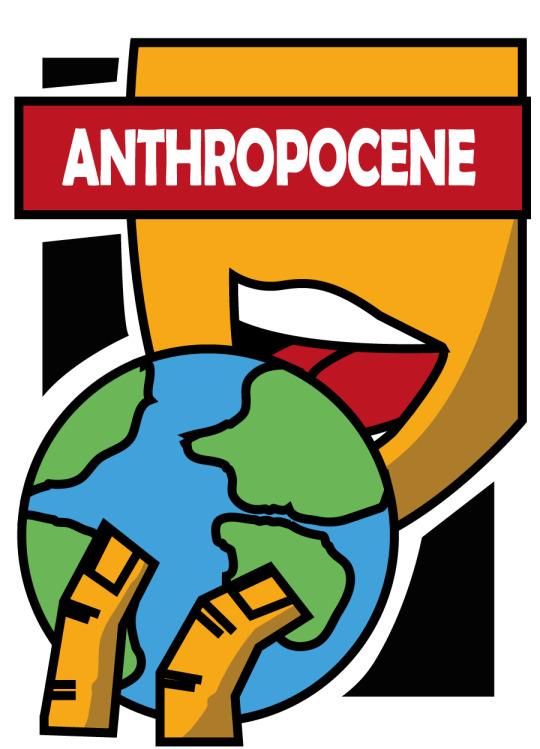

0 notes
Text
Poster about birds drowning in hazardous waste
Reference :

My work :

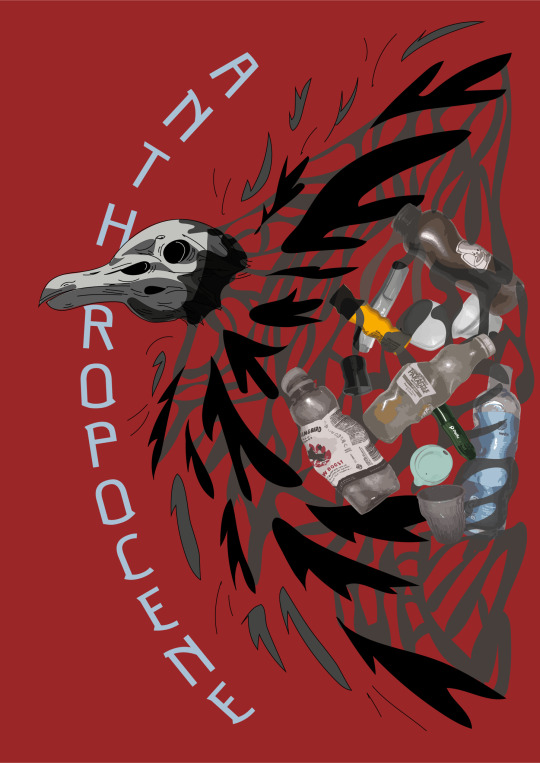
0 notes
Text
Primary research for Anthropocene poster










I took a few photos of the plastic that I could only see on the street, while walking, and at home. To then use it in the design of my poster. Because plastic is an integral part of environmental damage. But later I managed to find large clumps of garbage, I understand this is very upsetting, and makes it clear that we still need help to overcome this problem and save our planet
0 notes
Text


Search for a composition to create a poster about harmful waste for birds
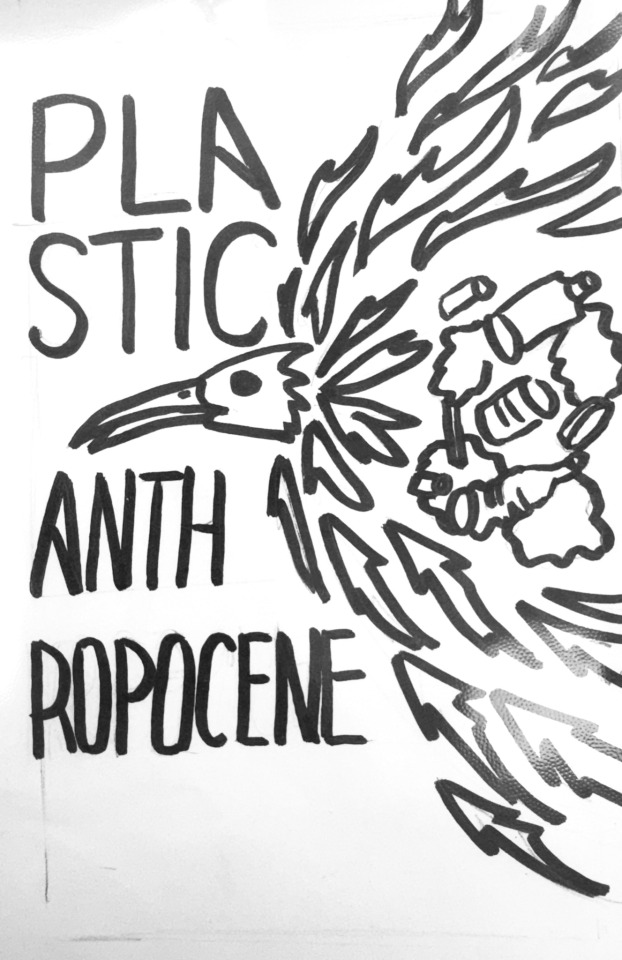


0 notes
Text
Research
Birds in oil spill :





United colours of Bennetton :




The photo "Duck in Gasoline" from the United Colors of Benetton advertising campaign (1992) is a powerful visual symbol created by art director Oliviero Toscani and photographer Steve McCurry. The work combines aesthetic provocation with a profound socio-ecological message. Here are the key aspects of its meaning:
• Environmental Protest :
- Gasoline as a metaphor for pollution: The image of a duck submerged in petroleum products references the consequences of oil spills, which destroy ecosystems and kill wildlife.
- In 1992, environmental issues were in the spotlight (Earth Summit in Rio), and Benetton, known for its socially charged campaigns, might have used this image to critique irresponsible fossil fuel use.
- The duck symbolizes nature’s vulnerability to human activity. The contrast between its fragility and the aggressive environment (gasoline) heightens the emotional impact.
• Critique of Consumer Culture :
- Benetton, as a fashion brand, could use this work to highlight the contradiction between the world of fashion (vibrant colors, aesthetics) and its environmental cost.
- Gasoline here serves as an allegory for the "fuel" of globalization: mass production, logistics, and dependence on oil.
• Political Context :
- In the early 1990s, resource-driven conflicts intensified (e.g., the Gulf War of 1990–1991). The duck in gasoline might allude to the link between wars, oil interests, and environmental destruction.
• Benetton’s Philosophy :
- Toscani’s campaigns always balanced fashion and activism. This photograph continues the tradition of shocking viewers to provoke reflection.
- Like other Benetton works (e.g., photos of bloodstained clothing from war victims), "Duck in Gasoline" blurs the line between advertising and art, turning a commercial message into a manifesto.
• Why Steve McCurry?
The photographer, famous for works like Afghan Girl, excels at capturing drama and humanity in his frames. Even in depicting an animal, he focuses on emotion—here, nature’s helplessness in the face of disaster.
This image is not just an advertisement but a call for awareness. It reminds us that fashion, technology, and progress should not exist at the expense of destroying the natural world. As Toscani once said:
“If my work doesn’t provoke controversy, I haven’t done my job.”
If this campaign were launched today, it could become a symbol of the fight against the climate crisis—the relevance of such imagery only grows.
0 notes















